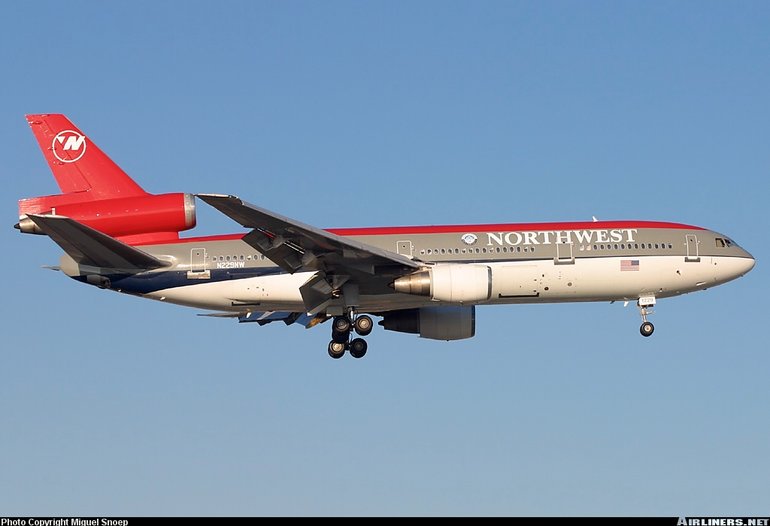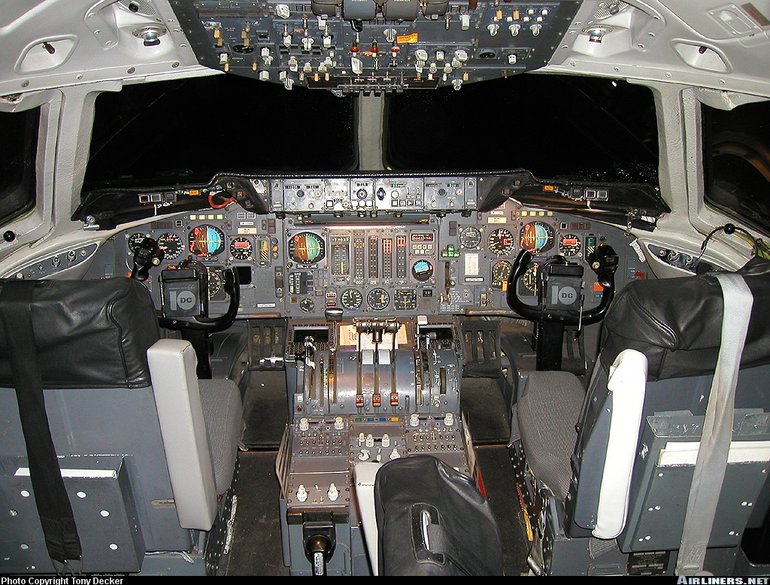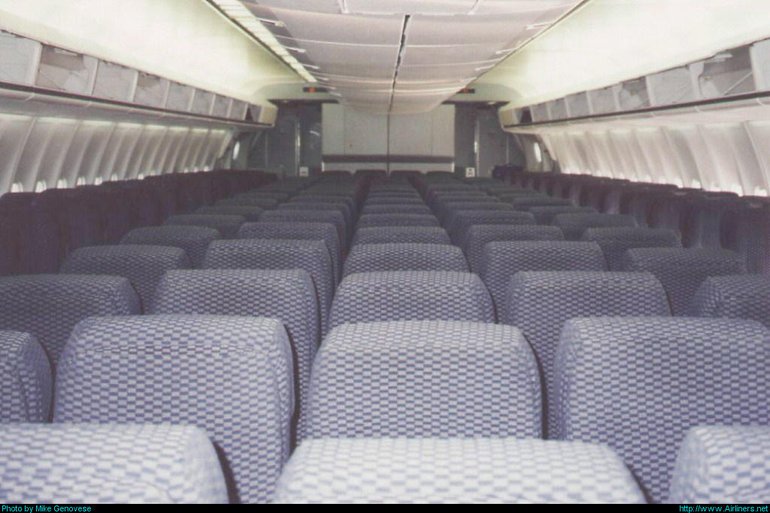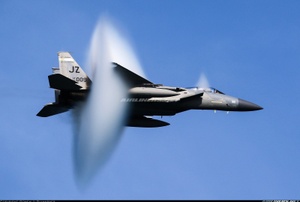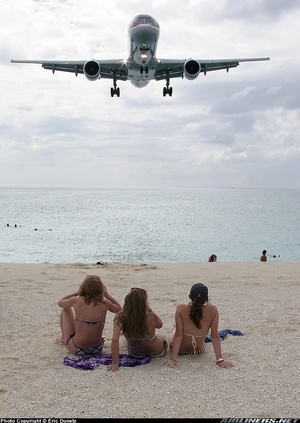McDonnell Douglas DC-10 & Boeing MD-10
Details
Country of Origin
United States of America
Type
Medium to long range widebody airliner
History
Designed in response to the same American Airlines requirement as the Lockheed TriStar, the DC-10, despite a sometimes troubled past, was the more successful of the two widebody trijets.
Although originally conceived as a twinjet, the DC-10 gained a third engine at the base of its vertical tail to meet an American Airlines requirement that the aircraft be capable of operating from existing runways. The DC-10 subsequently was launched in February 1968 with orders from American and United. First flight took place on August 29 1970.
The first transcontinental range DC-10-10s entered service with American in August 1971. By then work was already underway on the intercontinental range DC-10-30 which introduced more powerful engines, additional fuel tanks and a third main undercarriage unit.
Most DC-10s built were 30s (including convertible 30CFs and pure freight 30Fs), while the 40 is a Pratt & Whitney JT9D powered variant ordered by Northwest and JAL. The United States Air Force ordered 60 CF6 powered DC-10s as KC-10A Extender tanker transports.
A number of major and catastrophic accidents marred the DC-10's service record in the mid to late 1970s, but the various causes of these accidents were overcome and the DC-10 continues to operate reliably. Production ceased in 1989.
The Boeing MD-10 conversion for Federal Express involves fitting DC-10s (both current freighters and "new" ex airliner freighter conversions) with a two crew Honeywell VIA 2000 EFIS flightdeck with six LCD screens. The instrument panel layout is identical to that in the MD-11, and pilots can be qualified to fly the two interchangeably. First flight was on April 4 1999, while the first of 89 MD-10 conversions for FedEx was delivered on May 9 2000 (the same day the conversion was certificated). Boeing is offering the MD-10 conversion to other DC-10 operators.
Powerplants
DC-10-10 - Three 178kN (40,000lb) General Electric CF6-6D turbofans, or 182.4kN (41,000lb) CF6-6D1s.
DC-10-30 - Three 218kN (49,000lb) CF6-50As, 226.9kN (51,000lb) CF6-50Cs, or 233.5kN (52,500lb) CF6-50C1s or C2s, or 240.2kN (54,000lb) CF6-50C2Bs.
DC-10-40 - Three 219.6kN (49,400lb) Pratt & Whitney JT9D-20s, or 235.8kN (53,000lb) JT9D-59As.
Performance
DC-10-30 - Max speed 982km/h (530kt), max cruising speed 908km/h (490kt). Range with max fuel and no payload 12,055km (6505nm), range with max payload 7415km (4000nm).
DC-10-40 - Speeds same. Range with max fuel and no payload 11,685km (6305nm), range with max payload (& JT9D-59As) 7505km (4050nm).
Weights
DC-10-30 - Empty 121,198kg (267,197lb), max takeoff 263,085kg (580,000lb).
DC-10-40 - Empty 122,951kg (271,062lb), max takeoff 259,450kg (572,000lb).
Dimensions
Wing span 50.40m (165ft 5in), length 55.50m (182ft 1in), height 17.70m (58ft 1in). Wing area 367.7m2 (3958.0sq ft).
Capacity
Flightcrew of three. Max seating for 380 passengers at nine abreast and 81cm (32in) pitch. Mixed class seating arrangements vary between 250 and 270.
DC-10-30F - 23 pallets on main deck.
Production
386 civil DC-10s and 60 military KC-10As built. By early 2003 180 remaining in airline service. FedEx has ordered 89 MD-10 conversions.
Related Links
McDonnell Douglas DC-10 & Boeing MD-10
The backbone of this section is from the The
International Directory of Civil Aircraft by Gerard Frawley
and used with permission. To get your own copy of the book
click here.
